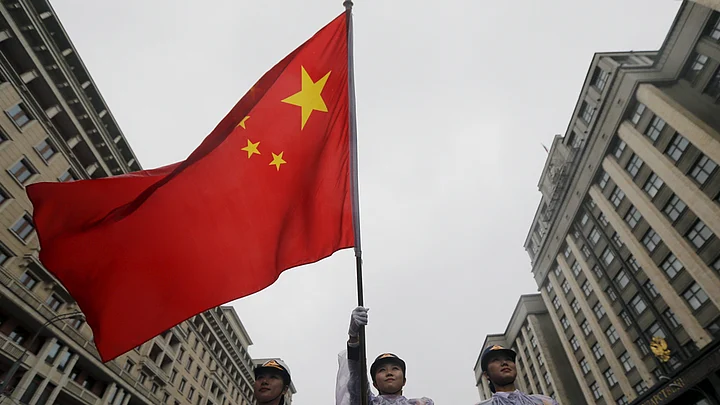During the past few decades, China’s foreign policy has been making news all over the world. China’s economic success has enabled it to pursue a greater role on the international stage, making inroads into different regional blocs with its growing economic and military might. Nowhere is China’s presence more keenly felt than within South Asia, where increasing Chinese activism is met with a combination of, both, enthusiasm and apprehension.
China, with its active and aggressive diplomacy, growing trade and investment relations with SAARC nations (China is India’s largest trading partner), and numerous cooperative agreements, makes its growing presence in South Asia evident.
It has been involved in several construction and infrastructure projects in the region. Of these, one of the most talked about projects is the famous China-Pakistan Economic Corridor (CPEC), which is touted as a ‘flagship project‘ of the One Belt, One Road plan.
Advantage for China
Strategically, this project aims at providing a link between the overland Silk Road Economic Belt and the Maritime Silk Road (through Gwadar Port). It is estimated that the investment envisaged under the CPEC project could make China one of the leading investors in Pakistan, accounting for about 20% of Pakistan’s GDP.
This ‘sweeter than honey and stronger than steel friendship‘, between the two countries, is viewed by many as a joint tactic to offset India’s power in the region. It also offers China greater connectivity to the Indian Ocean region and beyond through Pakistan.
China’s influence can be witnessed even in India’s most-friendly eastern neighbor, Nepal. Recently, China has been investing heavily to enhance strategic ties with Nepal; it has opened Kyirong land-port between Tibet and Nepal which is bound to affect the regional strategic balance.
China’s SAARC Ambition
- China with its growing trade and investment relations with SAARC nations making its presence felt in South Asia
- China cosying up to Pakistan viewed by many as a joint tactic to offset India’s power in the region
- Constant political tussle between India and Pakistan has largely ensured SAARC’s failure
- Awarding China full-membership of SAARC raises justified security and strategic concerns for India
- Taking care of aspirations and concerns of all other SAARC nations will hold it in good stead
China’s Rise = India’s Decline?
China seems to be silently playing its cards to influence the geopolitical environment of South Asia. Silent moves, though, are now growing into powerful voices seeking and demanding full SAARC membership for China. China entered SAARC as an observer in 2005, supported by most member states; observer states collaborate with SAARC members on specific initiatives, but do not have voting rights. However, as recently as November 2014 during the SAARC summit in Nepal, China expressed its interest in joining the regional bloc as a full-member state. Pakistan has been batting vociferously for China’s full-membership as well.
China’s growing interest in South Asia has raised questions — not only within the region, but in USA as well — concerning the nature of China’s rise and its implications. China’s greater presence and activism exhort, at the very least, that India cannot afford to remain complacent. The ‘rise of China‘ is often viewed as the ‘decline of India‘ in South Asia. This has serious implications for India and calls for a re-think of India’s regional strategies.
A unique ‘power struggle‘ between India and China is rapidly changing the South Asian strategic landscape; India’s efforts to block China’s entry into the SAARC grouping, during the SAARC summit, made the struggle all the more evident.
Challenge for India’s Monopoly
The constant political tussle between India and Pakistan has largely ensured SAARC’s failure as a driver of regional integration. This begets the question: is China taking advantage of the situation and, thus, pressing for SAARC membership?
There are two opposing considerations to China’s entry into SAARC. China’s entry can give a much needed push to the regional bloc as its global economic influence can strengthen the region’s positioning at international forums; China can also help fulfill investment needs of member-states. Yet, China’s inclusion in SAARC might develop a strong Pakistan-China alliance which may work against India. China, as a full-member in SAARC, may also veto important décisions that hamper the region’s progress.
SAARC has always been dominated by India, both, economically and politically. This is no surprise owing to India’s size, central location, its economic success, strong leadership and growing population. If China joins SAARC, one can assume that it would act as a counterweight to India’s influence in the grouping. India’s virtual monopolistic decision-making power in SAARC would finally be challenged. India would also constantly be wary of China’s ‘special‘ relationship with Pakistan. Awarding China full-membership raises justified security and strategic concerns for India.
Change in Approach
From India’s actions it is clear that India wants to retain its dominance in SAARC but this may not be possible with its current approach. It is time for India to redefine its role, by going the extra mile and behaving like an ‘elder brother‘ instead of ‘big brother’ to other South Asian nations. Productively addressing, the aspirations and concerns of all other SAARC nations and pushing the region collectively ahead will hold it in good stead.
SAARC must also clarify the role, limits and direction of the relationship of member states with observer ones. Internal political tussles and conflicts must also be addressed, as only a closely-knit and integrated South Asia can dissuade China’s entry in the region.
[The writer is International Trade Expert and presently Director, Bureau of Research on Industry and Economic Fundamentals (BRIEF), New Delhi]
(At The Quint, we question everything. Play an active role in shaping our journalism by becoming a member today.)
